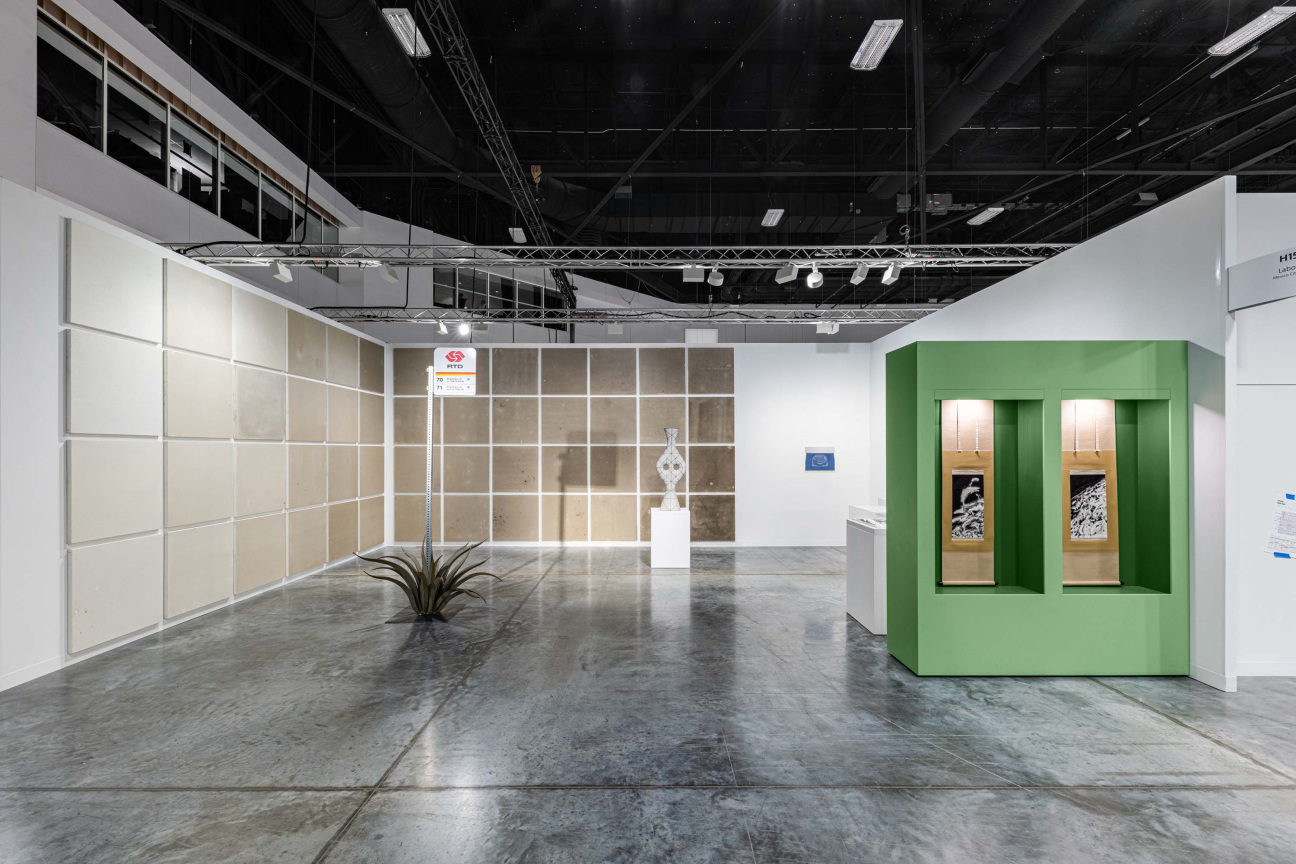
Visiting an art fair as an artist, I’ve been told, is like watching your parents have sex. Getting anywhere close to the action feels obscene, but the fact that it happens is healthy and even necessary—as long as those who are not directly involved don’t have to think about it.
Since the debut of the first modern art fair, Art Cologne, in 1967, the number and scale of these commercial events has multiplied exponentially, reflecting and fuelling the expansion of the art market as a whole. No fair symbolizes the art world’s growing association with pop culture, celebrity, and excess more than Art Basel Miami Beach.
First held in 2002, the event began as the fun-loving, sunny alternative to its buttoned-up Swiss sibling at a time when collectors from the Americas were becoming increasingly powerful. Twenty-one years later, ABMB, as it is now known, is a juggernaut, generating an estimated annual economic impact of roughly $400 million for Miami and spawning countless satellite fairs, marketing pop-ups, and parties entirely unrelated to art.
Through it all, one thing hasn’t changed. When this year’s edition of the fair opened to VIPs on Dec. 6, dealers were standing in the middle of their booths, hands behind their backs, ready to do business, just as they were two decades ago. To get their take on the evolution of Art Basel Miami Beach and everything it represents, CULTURED assembled a roundtable of three gallerists at different stages in their careers: Tim Blum, Pamela Echeverría, and Ellie Rines.
Blum, who co-founded the influential Blum & Poe gallery in 1994, has contributed to the rise of Los Angeles as a global art capital and exposed American audiences to Japanese cultural figures from Takashi Murakami to the leading names of the Mono-ha movement. He has attended ABMB from the very beginning, but returns this year under the banner of his new independent venture, Blum.
Echeverría worked at the influential Mexico City dealership Galería OMR before establishing Labor gallery in 2009, which has earned a reputation for cerebral, political, and ambitious projects. She has seen up close the fair’s evolving relationship with collectors in Central and Latin America.
Finally, Ellie Rines—who founded her New York gallery, 56 Henry, in 2015—is attending Art Basel Miami Beach as an exhibitor for the first time this year. Here, the trio discuss the ways that fairs serve as a microcosm of the art world’s evolution—for better or for worse.
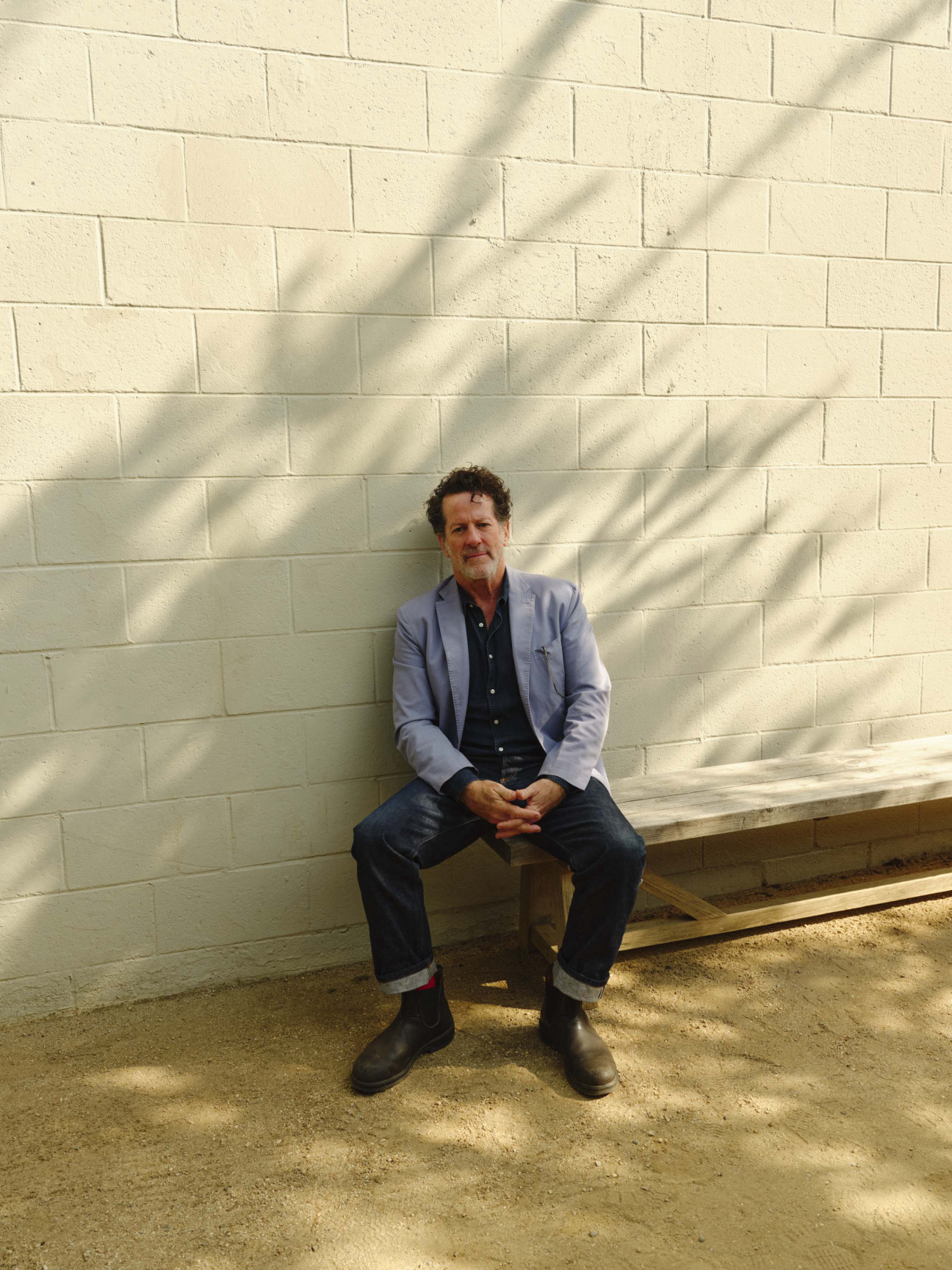
CULTURED: Tell me about your first Art Basel Miami Beach experiences. Tim, you went to the very first Miami fair in 2002. What was it like?
Tim Blum: A charming, small-town gathering. It was not the art world that we’re in now, and Miami Beach was not what it is today. Collins Avenue was boarded up, and there were tumbleweeds—almost literal tumbleweeds—going down the boulevard. It was super strange to see all the Euro-chic dealers kitted out and walking down Collins. All the dealers that you know now, and either hate or love, were getting going then.
Pamela Echeverría: We applied in 2010 with a project by Héctor Zamora. When he sent me his proposal, I was so seduced by the power of the work. A couple weeks before the fair, I realized there might be a problem. It was composed of 12 industrial fans blowing through wind cones, like the ones at the airport. It was so loud. I can’t tell you how much money I spent on bottles of tequila—I left them on every booth nearby with a note asking for forgiveness, because it was real torture. In the end, we did well. And nobody forgot about us.
CULTURED: Ellie, you’re doing Art Basel Miami Beach for the first time this year with a project in the Positions sector, which is dedicated to installations by emerging artists. That’s a real investment for a young gallery, but you’ve made the calculation that this is the right move for you. Why?
Ellie Rines: It remains to be seen; talk to me on Jan. 1. There’s obviously a level of prestige associated with Basel. Last year, people were coming up and telling me that it was such a crime that we weren’t let in. We didn’t apply. So I guess part of the reason for doing the fair is for a lack of embarrassment. But I do think it’ll be good for getting a bunch of curators to see the work. Our program doesn’t really lend itself to art fairs easily because we don’t have a bunch of inventory lying around.
We’re showing a project by Cynthia Talmadge. It’s an imagined reconstruction of the studio of Mary Pinchot Meyer, a Sunday painter and DC socialite. She was a mistress of JFK’s—she got him into LSD, trying to get him to imagine a more peaceful existence. She either committed suicide or was murdered, and all of her belongings were confiscated by the CIA. There will be six monumental paintings of imagined objects and researched objects.
CULTURED: How much are you investing in the project?
Rines: Well, we’ve already had to put in $30,000 for production because it’s a shorter time frame. So Cynthia has about five assistants in the studio—it’s all super labor-intensive.
CULTURED: These days, that kind of experimental art-fair presentation is limited to sections dedicated to younger galleries and special projects. But back in 2006, a boom time in the art market, Gavin Brown presented a nearly empty booth with an Urs Fischer sculpture of a crumpled cigarette box on the ground. He described that presentation to me later as “cocky poetry,” which he said is no longer particularly welcome or appropriate at art fairs. Do you agree?
Blum: Art fairs sum up, in a microcosmic way, our art world. The fair, ultimately, is the quintessential definer—and it’s a great leveler, too. Fairs used to be a place where you’d strike that balance between capital and something like the project that Ellie is doing. Hopefully at the end of it, it all balances out. I’ve certainly had a history of doing that—in Art Basel Statements in 2000, we did a Sam Durant installation that was, in retrospect, psychotic. It was a Southern rock ’n’ roll Zen garden and a shack that he constructed out of scrap.
CULTURED: Did you sell it?
Blum: Fuck no. We ended up just smoking pot on the porch and gave out joints. That’s a different time right there, right? Certainly, it’s not what I’m up to these days. Right now, it’s all painting all the time, all marketed and presold. It used to be, at these fairs, including Miami, there’d be curatorial and museum groups coming through with trustees. Now, the city has become so insane that the fun has worn off for some people.
Echeverría: Totally. Little by little, you started noticing that the Europeans decided not to go anymore. It was the party economy that ended up sort of destroying the vibe. I can tell you that people in Mexico go to Art Basel weekend just for the parties.
Blum: The Florida component is not insignificant, by the way. I have plenty of clients, friends of mine, who won’t go to Florida again. The last political one, at least that I remember, must have been in 2016 after Trump was elected. We actually did a whole thing with Henry Taylor and Sam Durant trying to make a statement. It feels kind of empty and weak now, in retrospect.
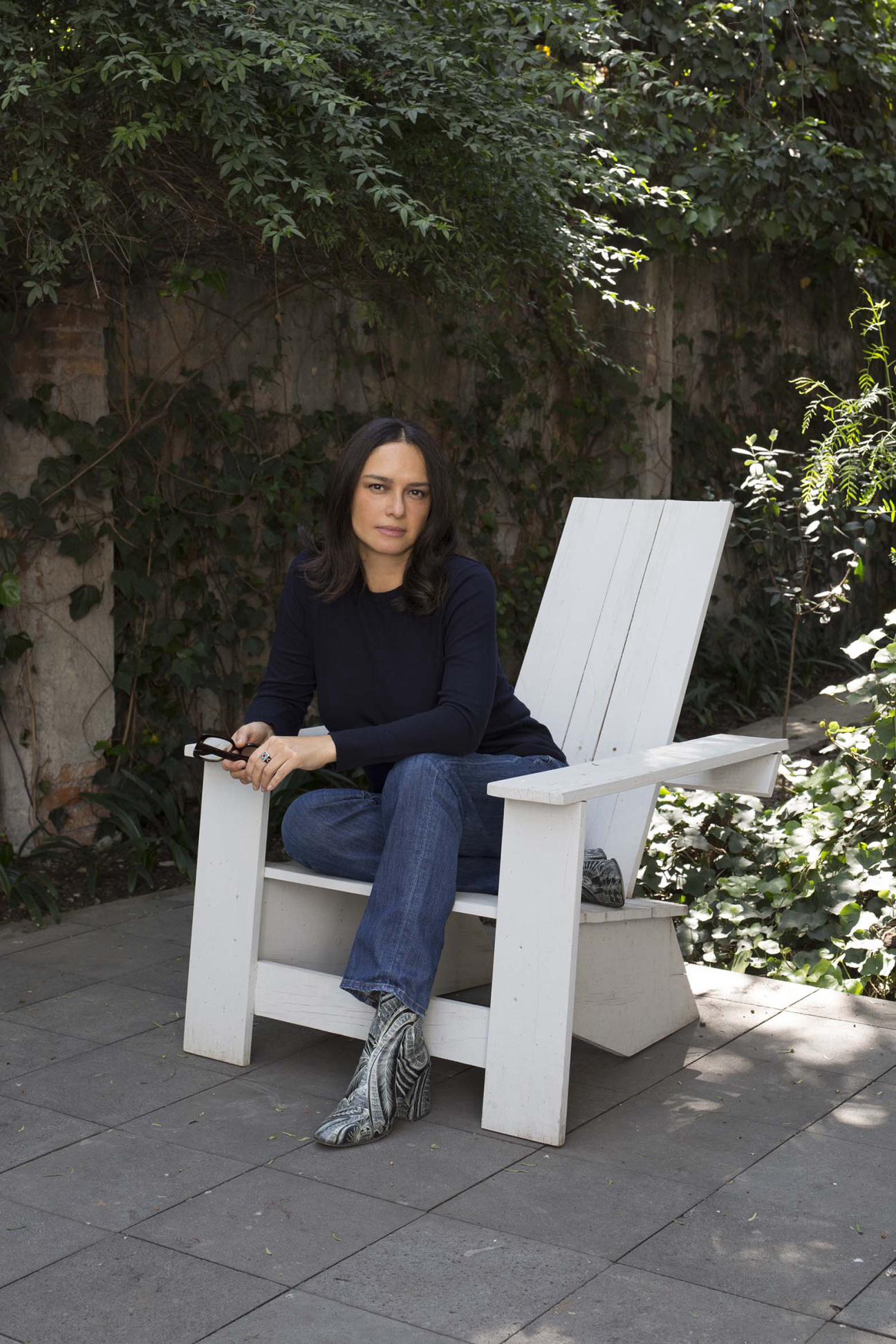
CULTURED: That’s the thing with art fairs. Art is supposed to be engaged with the world, but you’re also in this hermetically sealed container. How do you deal with that tension?
Blum: There’s no easy answer. I’ve been involved with a number of artists who tried to democratize [the art world]—but the best intentions often get sideswiped, either by ego or the seduction of capital. I guess you just have to hold true to what you’re doing and if you believe in it, do it. Or just show abstract painting and call it a day. That, uh, was a joke.
Echeverría: No, it’s true. We have a program that is profoundly political and in your face. And it’s always a struggle. You have to add a little candy, too. During the pandemic, when everybody was panicking and nobody knew if they were going to die tomorrow, I started changing the work that I had around me at my place. I was like, Shit, I just want to look at a pretty painting. Maybe an abstract painting would be super nice to have. I realized that beauty is also a human necessity. And in the financial realm, it’s true that with 100 percent political art, it’s impossible.
CULTURED: I want to talk about money. According to the latest Art Basel and UBS Art Market Report, sales at art fairs represented 42 percent of gallery revenue in 2019 and 35 percent in 2022. How does that compare to your experience?
Rines: I don’t really think so much about the operating costs because we try to keep it pretty lean. I want the artists to be able to be in their studio full-time, if that’s what they want. We have a Google sheet on every artist, and we try to really look at their specific numbers. We can do a fair that’s less competitive than Basel and use it to drum up some money for an artist who is between exhibitions and whose bank account might be getting a little less comfortable.
Echeverría: The pandemic proved to us that we don’t need art fairs to live, but we do need art fairs for other purposes. The market in Mexico is growing faster and faster, and during the pandemic, super wealthy people had no choice but to look at local galleries. Our Rolodex increased. We are doing fewer fairs now. Each one needs a really clear purpose.
Art Basel is about prestige. You might lose money during the fair, but at the end of the day, you have the Angus Beef stamp on your forehead, and it keeps you selling the whole year. People trust you because of it. But I don’t know how much longer this is going to be sustained because I feel that Art Basel and Frieze are now turning into lifestyle brands and not entities that support valuable artistic work.
Blum: Basel has the ultimate stamp. Frieze was always cooler on some level, but it was never as good. Of course people are going to tell you, Ellie, “Oh my God, it’s a crime that they don’t let you in.” Having been on the committees, there’s crazy-ass shit that goes on. I was on the Miami one for a long time. It was a good committee, and then it wasn’t. People have their own individual shit they bring, and they actually have an impact. If they don’t like you, they’re going to do whatever they can to make sure you’re not in.
Echeverría: Do you know what happened to me once? My application was leaked to this artist who started bitching about the proposal we sent. And this bitching went to top-level curators all over the world. And these curators emailed me asking, “What’s going on? This is bad.” So I understood the meaning of resilience at that time. I kept quiet. You keep going.
Blum: We didn’t do any fairs until we got into Art Basel Statements. We were such arrogant twats back then. We had to be, because we were from the West Coast and everybody thought we were from Nowheresville. We did Murakami and then Durant. And then a few years later, we were bounced. It was totally political because one of the main board members wanted to show Murakami—it was a quid pro quo.
And at that point in the gallery’s career, the fair was a really important source of income. It was just like you described, Pamela. You have to be resilient. Fortunately, there are other ways to navigate now. They had to change the whole system. They can’t just bounce people anymore. Instead, you have to wait for people to either retire or die or commit a crime of some sort.
Echeverría: Depends on the crime. [Laughs]
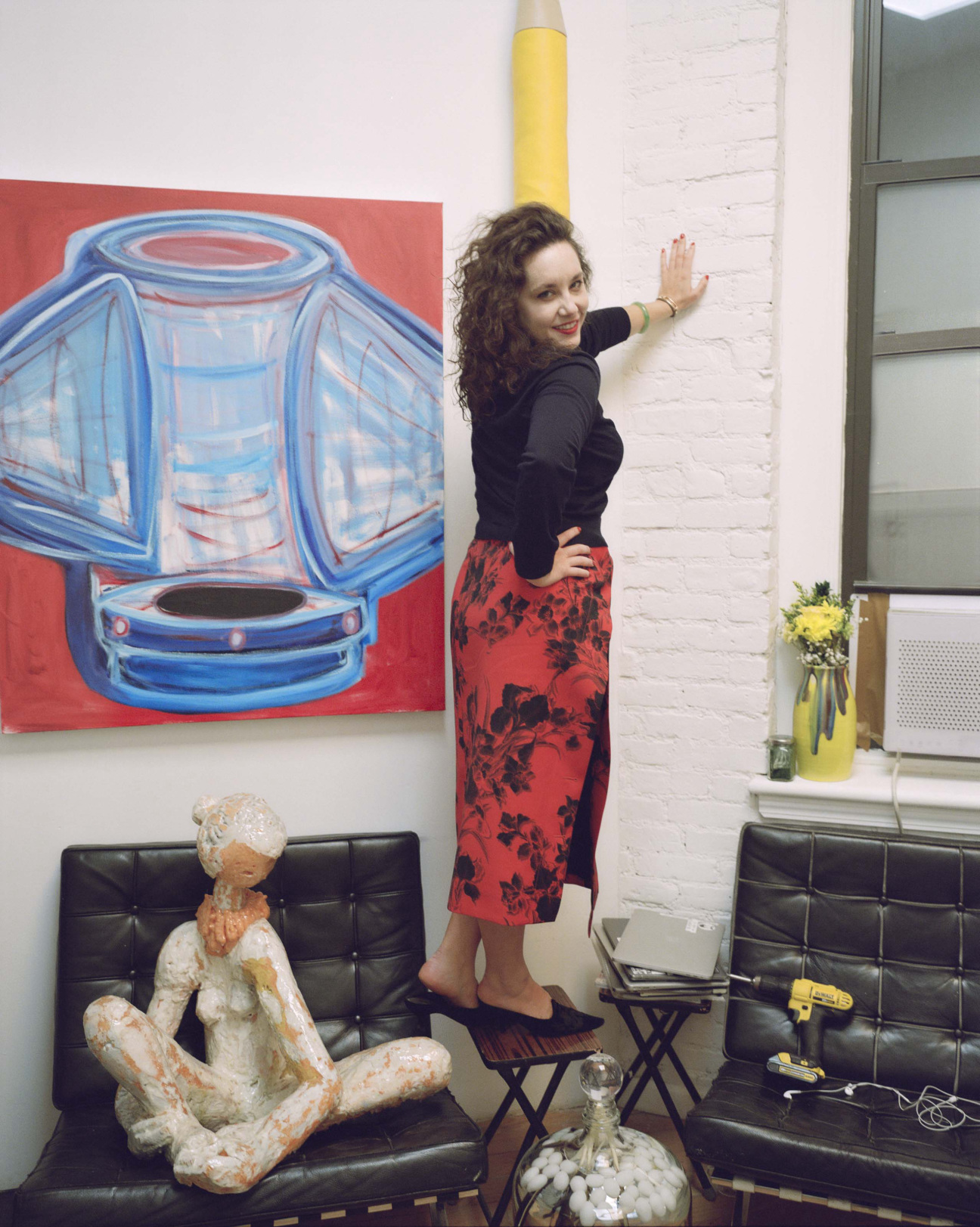
CULTURED: I think everyone would agree that fairs are one of the worst places to see art. But they are also the way that a lot of people do see art, especially really busy people. Ellie, you’ve said that you feel like fairs are an opportunity to show your program to curators in New York who don’t want to come downtown.
Rines: It drives me nuts. We can put all this time into a solo show … we think it’s this important development in the artist’s work. And then I’ve got to bring everything to an art fair to get all the curators in New York to see it. I assumed that art fairs were supposed to be a way to drum up sales. But instead, I have to use them to get curatorial attention, which is incredibly frustrating.
Echeverría: In the end, you have to use the fairs the way they work. For example, in Art Basel this year, these booths that I would look forward to every year, spectacular presentations that were planned for months and months and months—they’re gone. And there are even dealers adding prices to the wall labels.
CULTURED: What’s so bad about that?
Echeverría: Well, I think having the price as the audience’s very first point of contact with an artwork is unfair to the work and unfair to the public.
Blum: I would never put prices out on the stand.
Rines: I wouldn’t mind putting the prices up and then going to the beach. [Laughs] We were in Chicago and not one person asked us the price of these rockets that we were showing. So, I’d like people to be curious about the price, but I don’t know that I need to include it on the label.
CULTURED: The thing is, it’s a commercial environment. It’s sort of silly to pretend that it’s not.
Blum: Should we roll it out?
Echeverría: I wonder if, instead of labels, we just put the price, not the name of the artwork. Nothing but the price. And big! [Laughs]
CULTURED: In 2019, before the pandemic, there was a lot of talk about the unfairness of the fair system. Larger dealers and smaller dealers were paying the same amount per square foot, but larger dealers were selling much more expensive art. So Art Basel and a few other fairs adapted by having larger galleries pay more per square foot to subsidize the smaller galleries. What do you think about that concept?
Blum: I was supportive of a tiered structure. There was also a flip side where some of the major dealers were trying to leverage their power to get another stand. Of course, if they could, they’d take the whole floor, right? That’s a real story. One gallery was like, “Well, we’d like a contemporary stand on the second floor and modern on the ground.” That’s the chasm between the behemoths and a young dealer like Ellie. The fairs, they’re emblematic of all of it.
CULTURED: If you were in charge of fixing the art world, how would you change art fairs?
Echeverría: That’s a tricky question. I think sometimes fairs just say, “If you agree to participate, it’s your risk.” Find a little empathy and compassion—especially with the young galleries—to make sure that they are not going to go bankrupt after the fair that you encouraged them so energetically to do. Appearing in the press does not pay the bills.
Rines: It’s important to support the ecosystem. If I make a sale for a larger gallery, they’re usually very generous in giving me a percentage. And I try to pay that forward. At NADA, I always try to bring collectors over to the project section and say, “Hey, $1,200 is nothing to you. This gallery just needs to do that four times and then they’re going to be okay.”
Blum: It doesn’t change—it just gets more expensive.
CULTURED: In this business, with all the art fair mania, what keeps you from getting cynical?
Blum: Change—always embrace change. I’m announcing a new gallery and identity and it’s not been fun, particularly, but it’s important. And remaining curious.
Rines: For me, it’s really the artists. Luckily I’m in New York, so I get to spend a lot of time with them. I find that to be the most rewarding part of my job: representing artists and getting to see them develop in different ways.
Echeverría: I agree, it’s the relationship with them. I pick the artists I work with because they fulfill my curiosity. In the end, the way I cultivate myself is through their vision.






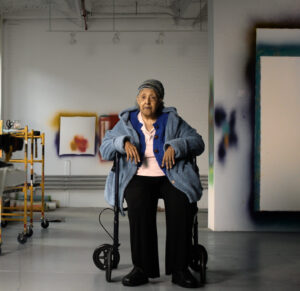



 in your life?
in your life?

